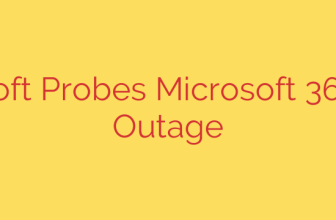
The Ultimate Uptime: Why On-Site Power is a Game-Changer for Colocation
For any business with mission-critical digital operations, downtime isn’t just an inconvenience—it’s a direct threat to revenue, reputation, and customer trust. While we invest heavily in redundant hardware and robust networks, the most fundamental vulnerability often goes overlooked: the public power grid.
Most data centers operate on a simple but flawed premise: they use the commercial utility grid as their primary power source and rely on backup systems for emergencies. This model, however, leaves your infrastructure at the mercy of an aging, overburdened, and increasingly unpredictable system. When you choose a colocation provider, you’re not just renting space and cooling; you’re betting on their ability to deliver continuous, uninterrupted power. This is why the source of that power matters more than ever.
The Hidden Risk of Grid Dependency
The traditional data center power model is reactive. It’s built around the assumption that the grid will fail, and the solution is a combination of Uninterruptible Power Supply (UPS) systems and diesel generators.
- UPS Systems: These are essentially massive batteries that provide instantaneous power for a very short duration—just long enough for the generators to start.
- Backup Generators: These are the workhorses of disaster recovery, but they are a temporary stopgap, not a permanent solution. They depend on finite fuel supplies, require constant maintenance, and represent a critical point of failure.
This entire infrastructure is designed to react to an outage, not to prevent one. Your business is perpetually one severe storm, grid overload, or physical threat away from testing this emergency system. For applications that demand true 100% uptime, this level of risk is no longer acceptable.
A New Paradigm: On-Site Power Generation
Forward-thinking colocation data centers are flipping the traditional model on its head. Instead of relying on the public grid, they are building their own private power plants. By implementing on-site power generation, typically using highly efficient natural gas turbines, these facilities create a self-contained, resilient ecosystem.
In this superior model, the on-site power plant serves as the primary, continuous source of electricity. The commercial utility grid is relegated to a backup role, used only in the unlikely event the primary generation system requires maintenance. This fundamental shift from grid-dependent to grid-independent operation provides a competitive edge that cannot be overstated.
Key Advantages of Colocation with On-Site Power
Choosing a provider with its own power generation capabilities offers profound benefits for your business’s security, stability, and bottom line.
1. Unrivaled Reliability and True 100% Uptime
When a data center generates its own power, it is insulated from nearly all external power-related threats. Blackouts, brownouts, and voltage fluctuations on the public grid become irrelevant. This allows the provider to offer a truly meaningful 100% uptime Service Level Agreement (SLA), backed by an infrastructure designed for continuous operation, not just emergency recovery. For industries like finance, e-commerce, and healthcare, this level of reliability is a strategic necessity.
2. Predictable Costs and Performance
The public utility market is volatile, with fluctuating prices, demand charges, and transmission fees that can lead to unpredictable operational expenses. A data center that produces its own power has far greater control over its energy costs. This financial stability translates into more predictable pricing for you, the customer, removing the risk of surprising surcharges tied to grid instability or market speculation.
3. Enhanced Physical and Operational Security
The public power grid is a known vulnerability. By disconnecting from it as a primary source, a data center significantly reduces its attack surface. On-site power generation creates an “island” of resilience, protecting your critical infrastructure from widespread grid failures caused by extreme weather, equipment failure, or even cyber-attacks targeting utility systems.
4. Scalability for Future Growth
As your business grows, so do your power demands. A colocation facility with on-site generation can scale its power capacity in a planned and controlled manner, ensuring that your power requirements can be met without being limited by the local utility’s capacity. This provides a clear and reliable path for future expansion.
Actionable Advice: What to Ask Your Colocation Provider
When evaluating a potential data center partner, move beyond basic questions about rack space and cooling. Dig deep into their power infrastructure to understand their resilience.
Ask these critical questions:
- What is your primary source of power? Is it the utility grid or your own on-site generation?
- Describe your complete power chain. How does power flow from the source to my equipment?
- What is your uptime SLA, and what specific guarantees does it include?
- How are you protected from regional grid failures?
- What is the fuel source for your primary generation, and what are your fuel redundancy plans?
The answers to these questions will reveal whether a data center is simply reacting to risk or actively eliminating it. In today’s digital landscape, the ability to ensure absolute uptime is no longer a luxury—it’s the foundation of business continuity. Choosing a colocation partner that has invested in its own primary power generation is one of the most strategic decisions you can make to protect your digital assets.
Source: https://www.datacenters.com/news/behind-the-meter-how-on-site-generation-is-becoming-a-competitive-advantage-in-colocation








